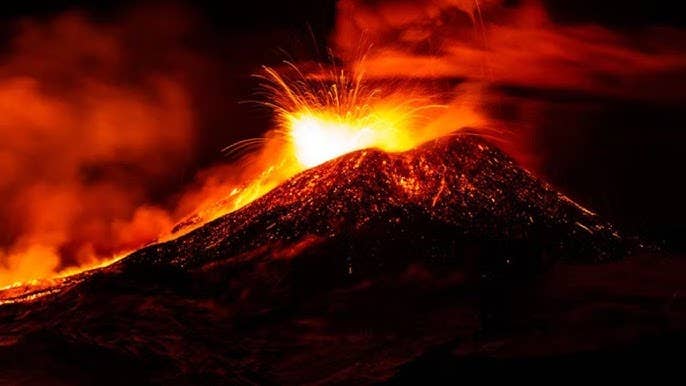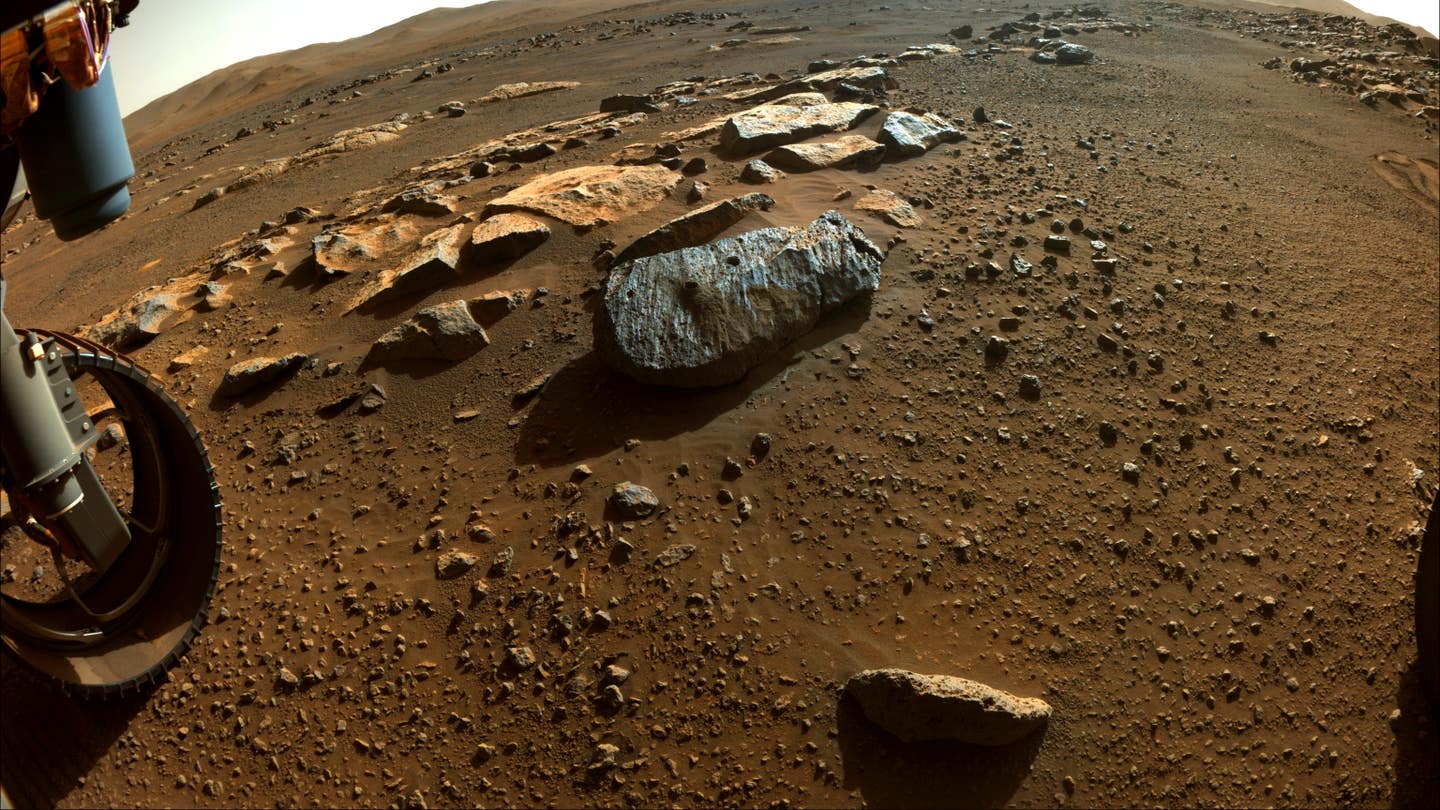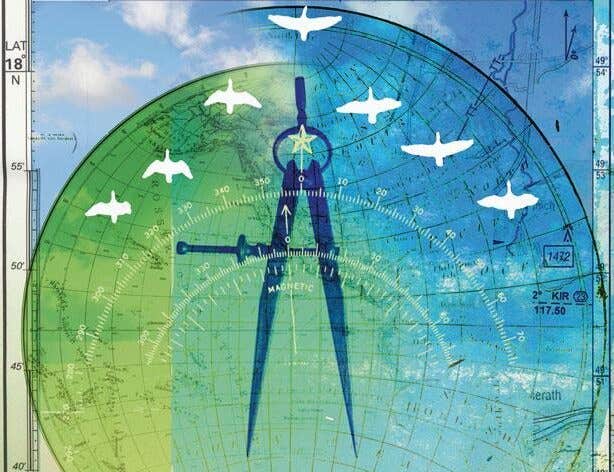New computer model predicts volcano collapses and tsunamis
New models reveal how magma triggers volcano flank collapse, helping scientists predict hazards and protect nearby communities.

Image of active volcano shows magma pressure inside volcanoes can destabilize slopes and trigger collapse. (CREDIT: YouTube / CC BY-SA 4.0)
When individuals hear volcanoes, they tend to envision blazing eruptions blasting into the air. However, volcanoes can also collapse sideways, with their sides, or flanks, collapsing. Such a collapse is just as devastating as an explosive eruption, occasionally triggering fatal tsunamis or landslides. What causes such dramatic changes has intrigued scientists for a long time, but a recent study is shedding light on the issue.
Her scientists have developed advanced computer simulations to simulate the unseeable forces that come into action when magma bulges upwards from below the ground. What they found is that the shape of a volcano, fault slope angle inside, and height of rising magma all have an effect on whether or not a slope will begin to move. This research is not an intellectual exercise. It could help the authorities detect early warning signs before a volcano flank collapses, giving surrounding communities a bit more time to prepare.
The Hidden Forces That Push Volcanoes to the Brink
Volcano slopes don't collapse suddenly. They require two: a weak point in the mountain that will serve as a slippery slide, and a powerful force pushing on it. The prime suspect for that force is magma, the melted rock that emerges as lava once it surfaces. When magma pushes into fractures, it can build pressure strong enough to send gargantuan blocks of the volcano's flank moving.
"The magma flowing beneath the volcano puts the crust under an incredible amount of pressure — far beyond water pressure," Penn State geoscientist Christelle Wauthier said. "It's putting huge stress on the rocks that can destabilize the volcano and make it collapse."
This pressure has been linked to slow sideways motion at volcanoes such as Kīlauea in Hawaii, Etna in Italy, and Piton de la Fournaise on Réunion Island. In some cases, these creeping shifts last for years before suddenly cascading into catastrophic collapse.
Building Better Models
Because volcano systems are enormously complex, Wauthier and her team simplified their models to focus on the stress created by magma intrusion alone. They ruled out other forces, including gravity and tectonic pressure, to better define the effect of magma itself generating flank movement. In two-dimensional finite element simulations, scientists experimented with different volcano shapes, slope angles, and fault orientations. They also varied the depth at which magma ruptures and tested if adding buttressing, or added support on one side of the mountain, changes the outcome.
The key measurement they used is known as Coulomb Stress Change, which measures whether situations in the volcano are conducive to slipping or otherwise. Through infinite simulations, there were clear patterns that emerged.
Shallow faults were most likely to slip when magma penetrated the central region of a volcano. Even steep slopes could not prevent this overall instability. When, on the other hand, magma pressed under steep volcanoes to deeper levels, even steeply sloping faults were vulnerable. Asymmetry, or asymmetric buttressing, had only slight impacts on overall instability.
The most striking finding, perhaps, came when the researchers juxtaposed models of real volcano shape against simpler flat-surface models. Ignoring topography, they discovered, consistently erred on the low side of estimating the motion of the ground and distributing stresses. For volcanoes on slopes over 17 degrees, such differences could even reverse stable results to unstable ones. That observation underscores the importance of considering a volcano's shape when estimating risk.
Lessons from past Disasters
History teaches us sharp reminders as to why this research is of such significance. In 1980, Mount St. Helens in Washington State erupted explosively after its north face collapsed. The eruption killed 57 people, burned nearly 200 homes, and leveled miles of forest. The collapse had been preloaded by intrusion of magma that had loosened the slope, an earthquake serving the final trigger.
In 1883, Indonesia's Anak Krakatau volcano exploded in a series of blasts that produced tsunamis exceeding 100 feet tall. More than 36,000 perished. One hundred years later, in 2018, the same volcano endured a catastrophic flank collapse, which again produced a deadly tsunami. Researchers would later determine that the slope had been slowly creeping for years prior to ultimately collapsing.
Other volcanoes, such as Guatemala's Pacaya, exhibit multiple flank motion in relation to magma. The new models explain why some of those flanks creep slowly while others collapse suddenly, depending on fault geometry and the depth of the magma.
Moving towards Applications in the Real World
Wauthier and her team hope their work can have a concrete effect on the monitoring of volcanoes. By identifying which slopes are most at risk under specific conditions, scientists can make improved decisions about where to place sensors like seismometers or GPS monitors. Having these vulnerable flanks under constant watch may give authorities precious hours or even days' worth of warning.
"This fundamental research can have applied uses to better assess specific collapse dangers and sections of the volcano that are more likely to be unstable," said Wauthier. "Over the long term, motivating this type of research might help volcano-edge communities by giving them time to plan and evacuate ahead of a collapse in case it is needed."
The authors who contributed to the study were Judit Gonzalez-Santana, Jay Sui Tung of Texas Tech University, and Timothy Masterlark of the South Dakota School of Mines and Technology. The funding came from the National Science Foundation, NASA, and Penn State's Institute for Computational and Data Sciences.
Seeing the Bounds
The scientists caution that their models are idealized systems. Actual volcanoes have additional forces such as gravitational loading, tectonic stress, and dilatation weakening through the effects of groundwater. Their models assume rocks act in simple, predictable ways, while in actuality, rock and fault materials often fail in more complicated patterns. Nevertheless, the findings provide a crucial stepping stone toward greater insight into the behavior of magma with faults.
Future work, Wauthier said, will include further improving the models by incorporating three-dimensional geometries and other factors like gravity. Each upgrade will bring the science closer to conditions in the natural world and, ultimately, better hazard predictions.
Practical Implications of the Research
This research is significant because it enables individuals who live around volcanoes to understand less uncertainty about what hazards they could be exposed to. By identifying the internal conditions that render volcanoes unstable, scientists can build more efficient monitoring networks and provide earlier warnings before collapse.
That knowledge may help lives in eruptions, keep deadly tsunamis at bay, and protect populations from ruinous surprises. The research also allows volcanologists to more accurately interpret ground deformation data, reducing the likelihood of overestimating or underestimating whether magma is controlling slope motion.
Eventually, this kind of modeling could become an important contribution toward engineering stronger systems for communities around some of the world's most deadly volcanoes.
Research findings are available online in the Journal of Geophysical Research Solid Earth.
Related Stories
- New research shows why Bolivia’s 'Zombie' volcano is stirring after 250,000 years
- What caused the Earth to shake every 90 seconds for 9 straight days in 2023? Mystery solved
- Dormant volcanoes may be more dangerous than previously thought
Like these kind of feel good stories? Get The Brighter Side of News' newsletter.
Joseph Shavit
Science News Writer, Editor-At-Large and Publisher
Joseph Shavit, based in Los Angeles, is a seasoned science journalist, editor and co-founder of The Brighter Side of News, where he transforms complex discoveries into clear, engaging stories for general readers. With experience at major media groups like Times Mirror and Tribune, he writes with both authority and curiosity. His work spans astronomy, physics, quantum mechanics, climate change, artificial intelligence, health, and medicine. Known for linking breakthroughs to real-world markets, he highlights how research transitions into products and industries that shape daily life.



